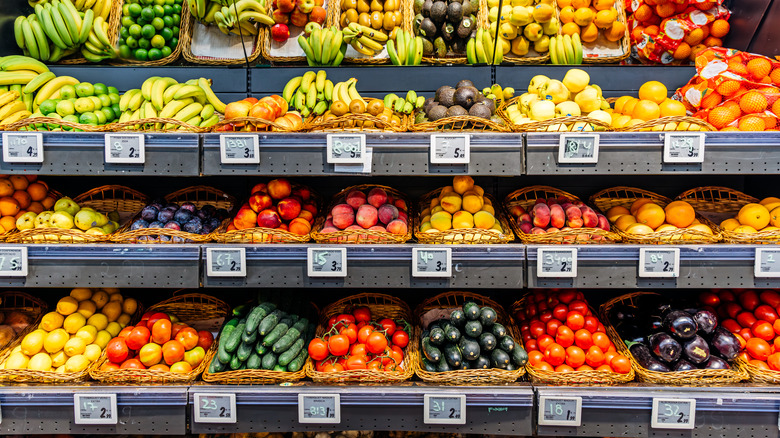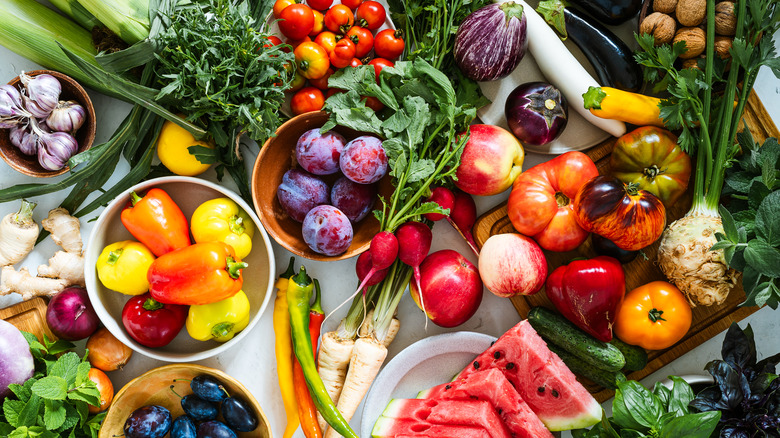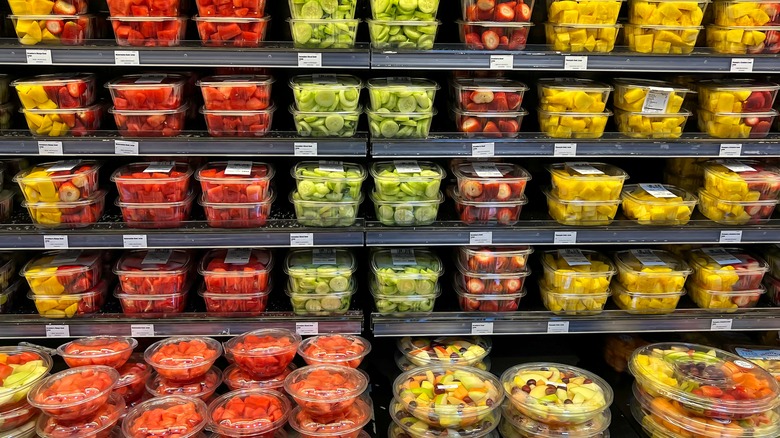The Simple Tip That Saves You Money When Buying Produce
It's no secret that groceries have been getting more expensive, and because of this we all want to try and save a little extra money where we can. At the same time, we want to make sure that we get the best quality goods for the cash that we spend. Well, fresh produce at the grocery store is one place you can find ways to hold a little back. They might not seem like huge savings, but over the course of a year and alongside other tips, they definitely add up.
One surprisingly simple trick to saving on produce is as easy as focusing on buying food that is in-season. This might require a little research to check exactly what is in-season when in your area, but it will be worth it in the long run. You'll find that in-season fruits and vegetables are consistently both cheaper and tastier than those that you get during the rest of the year.
Why buying food in-season helps your budget and your dinner
Until relatively recently, most fruits and vegetables had specific times of the year when they could be harvested — the rest of the year, you just wouldn't be able to get those items. For the most part, that isn't the case anymore and most produce is available year-round in much of the world, meaning you can get them even when they're not in-season. But this particular modern luxury comes at a cost.
To be able to provide these fruits and vegetables in the grocery store, extra processes are needed on the production end. A lot of produce that is delivered out of season is brought to the store from another country with a different climate. The transportation itself adds to the cost for the manufacturer, and that cost is passed along to you as the consumer, meaning that out-of-season produce ends up being more expensive. It also means that the food has taken longer to get from the field to the shelves of your store and might have been treated to keep it looking fresh. The end result is food that isn't as nice as the in-season equivalent that might come from a local farm.
Alternatively, out-of-season fruits and vegetables might be grown in an artificial environment. This means that while there might be lower transportation costs, there are additional costs in the form of more lighting, environmental controls, and fertilizers. In short, when extensive transportation or an artificial climate is needed, those costs are passed on to your grocery bill and they're also bad for the planet as well.
Produce hacks to avoid at the grocery store to save money
While you're avoiding buying fruit and vegetables that are out of season, another cost saving tip is to skip buying pre-cut produce. These can be useful for people with mobility issues for whom cutting up extra produce will either be a major inconvenience or not really feasible at all. But if you're just looking to shave a few minutes off your prep time, they're better to dodge.
You can easily find yourself paying twice as much for pre-prepped fruit and vegetables compared to the whole produce. After that initial cost, you have to contend with the other issues created by the produce being cut already. It is likely to last much less time before going bad, it might be coated and treated to hide the fact that it already isn't as fresh as it looks, and there is higher risk of contamination with pre-cut fruits and vegetables. The exception to these issues are the frozen options. The freezer selections are one way around the additional cost of buying out-of-season produce as you can buy it at any point in the year, but it's important to remember that some of those items work better from frozen than others.


